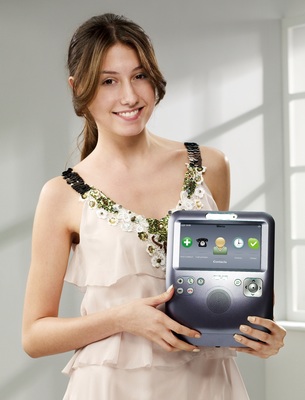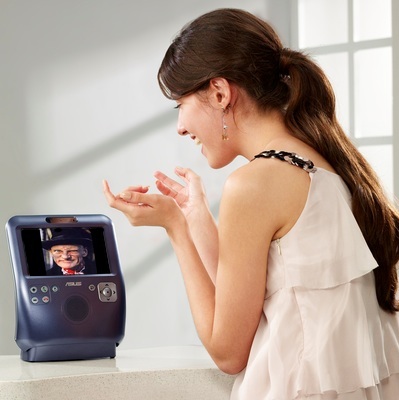This article is more than 1 year old
Asus Eee Linux-based Skype Videophone
Chat with your chums, change the source code
Details of what’s actually inside the box are not readily advertised but some digging revealed that the AiGuru SV-1 relies on an AMD CPU running Linux. In fact, the supplied CD – that includes a more extensive user guide than the hopeless multilingual booklet – also contains source code for this device.

Eee videophone and friend
If you already have a Skype account, then getting started is breeze, although there's an option to create one. On boot, the unit scans for wireless networks and, using the navigation keys, such details as passphrases are easily, but slowly entered in by highlighting letters on a virtual keyboard.
Other settings include time, language and country. When scrolling through the Menu icons, the choice to be selected zooms to the fore. Before signing in, this is limited to Settings, Sign in, Create account and See Myself. The latter lets you tweak the video, which could also do with several tweaks to the options provided: Snapshot, Brightness and Advanced. The Advanced settings provide Contrast, Saturation, Sharpness, Hue and Power Line Frequency - which didn’t seem to do anything. The image adjustments were rather crude and the default setting produces a very dark image.
Attempts to get a decent colour balance were nigh on impossible, as this section desperately needs a white-balance function. This becomes more evident during evening conversations, as the colour temperature changes and unnatural light is introduced. It seems that the camera has no way of dynamically calibrating itself during a call to suit the shifting conditions. Instead, you have to termine a conversation, tweak the settings and then resume the call.

Call now to talk to dirty old gits *you* want to meet
One final bugbear on the camera: it doesn’t have a mirroring option, so framing items to display, including oneself, can be a challenge at times.
